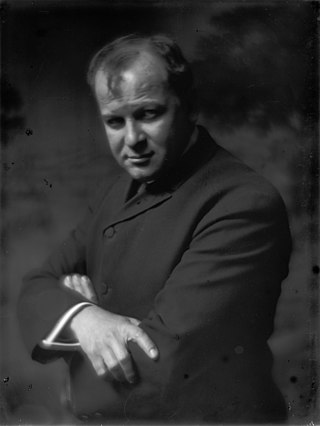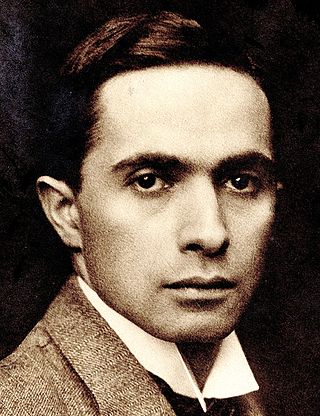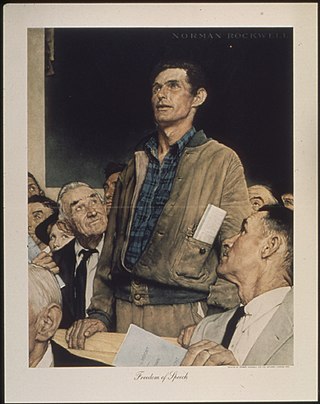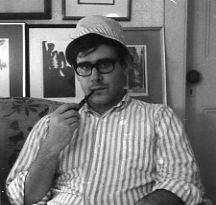Related Research Articles

Norman Percevel Rockwell was an American painter and illustrator. His works have a broad popular appeal in the United States for their reflection of the country's culture. Rockwell is most famous for the cover illustrations of everyday life he created for The Saturday Evening Post magazine over nearly five decades. Among the best-known of Rockwell's works are the Willie Gillis series, Rosie the Riveter, The Problem We All Live With, Saying Grace, and the Four Freedoms series. He is also noted for his 64-year relationship with the Boy Scouts of America (BSA), during which he produced covers for their publication Boys' Life, calendars, and other illustrations. These works include popular images that reflect the Scout Oath and Scout Law such as The Scoutmaster, A Scout Is Reverent and A Guiding Hand, among many others.
James Gurney is an American artist and author known for his illustrated book series Dinotopia, which is presented in the form of a 19th-century explorer's journal from an island utopia cohabited by humans and dinosaurs.

George Benjamin Luks was an American artist, identified with the aggressively realistic Ashcan School of American painting.

Daniel Carter "Uncle Dan" Beard was an American illustrator, author, youth leader, Georgist and social reformer who founded the Sons of Daniel Boone in 1905, which Beard later merged with the Boy Scouts of America (BSA).

Joseph Christian Leyendecker was one of the most prominent and financially successful freelance commercial artists in the U.S. He was active between 1895 and 1951 producing drawings and paintings for hundreds of posters, books, advertisements, and magazine covers and stories. He is best known for his 80 covers for Collier's Weekly, 322 covers for The Saturday Evening Post, and advertising illustrations for B. Kuppenheimer men's clothing and Arrow brand shirts and detachable collars. He was one of the few known homosexual artists working in the early-twentieth century U.S.

William Hillcourt, known within the Scouting movement as "Green Bar Bill", was an influential leader in the Boy Scouts of America (BSA) organization from 1927 to 1992. Hillcourt was a prolific writer and teacher in the areas of woodcraft, troop and patrol structure, and training; his written works include three editions of the BSA's official Boy Scout Handbook, with over 12.6 million copies printed, other Scouting-related books and numerous magazine articles. Hillcourt developed and promoted the American adaptation of the Wood Badge adult Scout leader training program.

American Regionalism is an American realist modern art movement that included paintings, murals, lithographs, and illustrations depicting realistic scenes of rural and small-town America primarily in the Midwest. It arose in the 1930s as a response to the Great Depression, and ended in the 1940s due to the end of World War II and a lack of development within the movement. It reached its height of popularity from 1930 to 1935, as it was widely appreciated for its reassuring images of the American heartland during the Great Depression. Despite major stylistic differences between specific artists, Regionalist art in general was in a relatively conservative and traditionalist style that appealed to popular American sensibilities, while strictly opposing the perceived domination of French art.
James Elliott Bama was an American artist known for his realistic paintings and etchings of Western subjects. Life in Wyoming led to his comment, "Here an artist can trace the beginnings of Western history, see the first buildings, the oldest wagons, saddles and guns, and be up close to the remnants of Indian culture ... And you can stand surrounded by nature's wonders."

Arnold Friberg was an American illustrator and painter noted for his religious and patriotic works. He is perhaps best known for his 1975 painting The Prayer at Valley Forge, a depiction of George Washington praying at Valley Forge. He is also well known for his 15 "pre-visualization" paintings for the Cecil B. DeMille film The Ten Commandments which were used to promote the film worldwide and for which he received an Academy Award nomination.

Willie Gillis, Jr. is a fictional character created by Norman Rockwell for a series of World War II paintings that appeared on the covers of 11 issues of The Saturday Evening Post between 1941 and 1946. Gillis was an everyman with the rank of private whose career was tracked on the cover of the Post from induction through discharge without being depicted in battle. He and his girlfriend were modeled by two of Rockwell's acquaintances.

The Four Freedoms is a series of four oil paintings made in 1943 by the American artist Norman Rockwell. The paintings—Freedom of Speech, Freedom of Worship, Freedom from Want, and Freedom from Fear—are each approximately 45.75 by 35.5 inches, and are now in the Norman Rockwell Museum in Stockbridge, Massachusetts. The four freedoms refer to President Franklin D. Roosevelt's January 1941 Four Freedoms State of the Union address, in which he identified essential human rights that should be universally protected. The theme was incorporated into the Atlantic Charter, and became part of the Charter of the United Nations. The paintings were reproduced in The Saturday Evening Post over four consecutive weeks in 1943, alongside essays by prominent thinkers of the day. They became the highlight of a touring exhibition sponsored by The Post and the U.S. Department of the Treasury. The exhibition and accompanying sales drives of war bonds raised over $132 million.
Herb Roe is a painter of large-scale outdoor murals and classical realist oil paintings. After attending the Columbus College of Art and Design in Columbus, Ohio for a short time, he apprenticed to mural artist Robert Dafford. After 15 years with Dafford Murals, Roe left to pursue his own art career. He currently resides in Lafayette, Louisiana.

Lorraine Fox (1922–1976) was an American illustrator and commercial artist who illustrated magazines, book covers, and advertisements. Among the magazines she illustrated for were Woman's Day, Good Housekeeping, Redbook, McCall's, and Cosmopolitan. She was inducted into the Society of Illustrators' Hall of Fame in 1979.

Tom Lovell was an American illustrator and painter. He was a creator of pulp fiction magazine covers and illustrations, and of visual art of the American West. He produced illustrations for National Geographic magazine and many others, and painted many historical Western subjects such as interactions between Indians and white settlers and traders. He was inducted into the Society of Illustrators' Hall of Fame in 1974.

The Scoutmaster is a 1956 painting by American illustrator Norman Rockwell. It was originally created by Rockwell for the 1956 Brown & Bigelow Boy Scout Calendar. Since then, it has become one of the most collected images that Rockwell created for the Boy Scouts of America.

We, Too, Have a Job to Do is a painting by American illustrator Norman Rockwell that depicts a Boy Scout in full uniform standing in front of a waving American flag. It was originally created by Rockwell in 1942 for the 1944 Brown & Bigelow Boy Scout Calendar. The model, Bob Hamilton, won a contest to be in the painting and personally delivered a print to the Vice President of the United States at the time, Henry A. Wallace.

Carroll Nathaniel Jones III was an artist in the style of American realism. Carroll grew up in New Providence, New Jersey, where his father, an illustrator for Life (magazine), was his first art teacher. He taught Carroll techniques of the Old Masters, who emphasized light, perspective, and composition. Carroll went to school in New York City (NYC) and enrolled in the Phoenix School of Design at age 17. He later attended Hartford Art School and became a commissioned portraitist for 10 years. After his work, Church Window was recognized in the New York Times, he moved away from portraits to recreate scenes that sparked memories of his childhood. Andrew Wyeth and Edward Hopper most influenced Jones. The Coe-Kerr Gallery of NYC and Whistler's Daughter Gallery of New Jersey represented Jones and contemporaries, Wyeth and Hopper. Malcolm Forbes, Frederick R. Koch, Stephen Sondheim, William Schuman, and Jean Shepherd held private collections. He exhibited at Newark Museum and Trenton Art Museum in New Jersey, and in universities, galleries and museums in seven states by his mid-thirties. His work is part of the permanent collections of Seton Hall University and Newark Museum. Art critic Marion Filler considered his work Magic realism, a quiet movement made famous in America beginning in the 1920s by Hopper, and related to Surrealism.
Charles Bosseron Chambers was a painter, illustrator and teacher. The Reading Eagle describes Chambers as the "Norman Rockwell of Catholic art" and reports that his paintings have become collectible. He is best known for the Light of the World, the most popular religious print in America during the first half of the 20th century.
References
- ↑ Granieri, Laurie. "PORTRAIT OF THE ARTIST", Asbury Park Press , January 6, 2002. Accessed February 5, 2011. "Joe Csatari is in a reflective mood today. He relaxes in his home art studio in South River, a sunlit perch set among bare tree branches..."
- "Joseph Csatari: An American Realist". Csatari official site. Archived from the original on January 4, 2006. Retrieved January 30, 2006. (article by Csatari on Rockwell)
- "Rockwell and Csatari". Henning Scouting Page. Retrieved January 30, 2006.
- "Josepeh Csatari". National Scouting Museum. Archived from the original on January 4, 2006. Retrieved January 30, 2006.